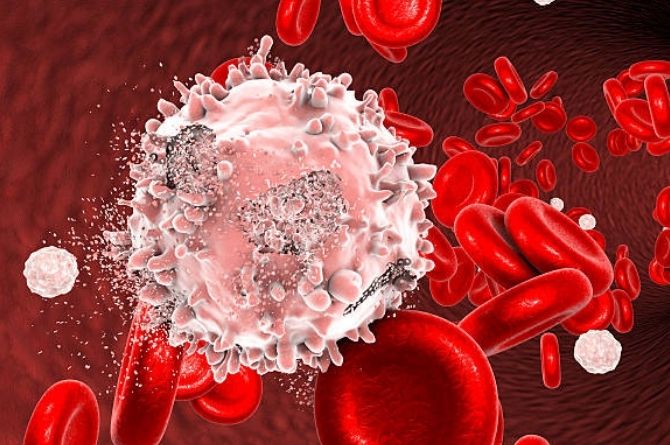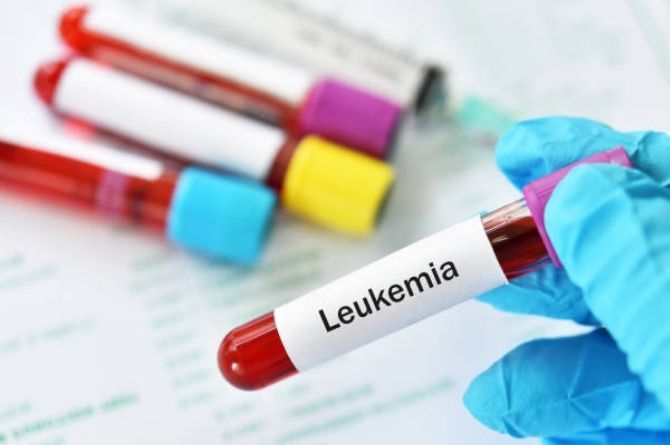Childhood leukemia or neonatal leukemia is a type of cancer that is most common in newborns and teens. It occurs after abnormal white blood cells form in the bone marrow and quickly travel through the bloodstream and crowd the healthy cells.
What can you read in this article?
- What is Neonatal Leukemia?
- Causes of Neonatal Leukemia
- Diagnosis of Neonatal Leukemia
- Major symptoms of Neonatal Leukemia
- Treatment of Neonatal Leukemia
This reduces the body’s immunity significantly and makes it prone to infection and other problems.
It generally shows up within the first 28 days of life and in most cases, it is congenital.
In fact, in almost two-thirds of patients, this disease can manifest in the form of acute myeloid leukemia (AML). That’s why, neonatal leukemia remains a major life-threatening malignancy in children, and unfortunately, the current survival rate is 10 percent in babies, when compared to 70 per cent in teens.
As tough as it is for a child to have cancer, most children and teens with childhood or neonatal leukemia can be successfully treated. Let’s take a deeper look into this disease and how it can be spotted through specific symptoms.
What is Neonatal Leukemia?

Image courtesy: iStock
Neonatal leukemia is present in infants at birth or can develop within the first month of their life. In almost 75 percent of infant leukemia cases, there is an abnormality of the gene MLL, on chromosome band 11q23. All the necessary mutations occur in the utero.
Causes of Neonatal Leukemia
Researchers found that maternal exposure to DNA topo 2 inhibitors during pregnancy can be linked to the development of congenital leukemia. So, the fetus is basically gets exposed to DNA topo 2 inhibitors through maternal diet and medications.
Hence, it is very important to take care of your diet when you are pregnant.
DNA topo 2 inhibitors can be found in not only some specific fruits and vegetables, but you can also find them in soy, coffee, wine, and cocoa, along with few medicines.
There is, in fact, a ten-fold higher risk of infant AML with the increase in maternal consumption of DNA topo 2 inhibitor-containing foods.
Advanced maternal age is also a major risk factor for neonatal leukemia. Parental age has been linked with several childhood cancers but there has been no strong evidence to back the studies.
Major symptoms of Neonatal Leukemia

Image courtesy: iStock
It can be quite traumatic to see your infant go through the pain, but here are some common symptoms of AML.
1. Rashes
When the cancer cells of AML spread from the blood and bone marrow to the skin, you can spot rashes on your infant’s body. They can look like lumps and spots that may resemble ordinary rashes.
On light skin tone, these rashes may often appear as red or purple in color. On the other hand, if the complexion is dark, the rash may look darker and will be less noticeable.
2. Bruises
There can also be bruises on your infant’s body. This mainly happens due to the low platelet count. Platelets usually do the work of stopping the bleeding including under the skin. Having fewer platelets means that bruises appear more easily and show up clearly.
3. Swollen gums
Your infant may also suffer from swollen gums. You may find that bleeding happens more than usual because of the inflammation in the mouth. As AML causes a reduction in red blood cells, some of the other symptoms that you can notice are fatigue, dizziness, headaches, and pale skin.
Diagnosis of Neonatal Leukemia
The doctors need to rule out any congenital infections before the diagnosis.
Here are some tests that they can do to detect the stage of leukaemia:
After the physical test, where the doctor will try to look for swollen glands, anemia, and other symptoms, a blood test would be recommended.
- Blood test: It is more accurate than a physical examination. This will help the doctor to determine any abnormal growth of WBCs indicating leukemia.
- Bone marrow test: In this test, the doctors take a sample of the bone marrow from the hip using a long needle.
Treatment of Neonatal Leukemia
The treatment for neonatal leukaemia includes intensive multi-agent chemotherapy. Your infant will need age-related dose adjustments along with supportive care.
Stem cell transplant is another possible treatment. This is also a common procedure to cure cancer. In this treatment, doctors replace the diseased bone marrow with a healthy one.
Neonatal leukemia is a rare disorder with a bleak prognosis but there is still some hope. Any hematologic abnormalities that can arise due to complications from chemotherapy can increase the risk of a hemorrhage. So surgical intervention can be recommended in this case.
However, surgeons will need to exercise extreme caution when considering craniotomy (a surgical operation, where the bone flap is temporarily removed from the skull to reach the brain).
When leukemia may be present later in infancy, the signs and symptoms are often less specific and they can include low-grade fever, lethargy, bleeding diathesis, diarrhea, or failure to thrive.
Chemotherapy can help cure neonatal leukemia. But there is a high risk of relapse and treatment in infants and toddlers when compared to older children.
However, don’t let it dishearten you. There are advancements happening every year and there is a sliver of hope for young toddlers suffering from this disease.
Source:
NCBI, Medical News Today
Republished with permission from theAsianparent Singapore
Here at theAsianparent Philippines, it’s important for us to give information that is correct, significant, and timely. But this doesn’t serve as an alternative for medical advise or medical treatment. TheAsianparent Philippines is not responsible to those that would choose to drink medicines based on information from our website. If you have any doubts, we recommend to consult your doctor for clearer information.